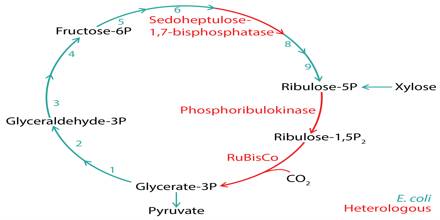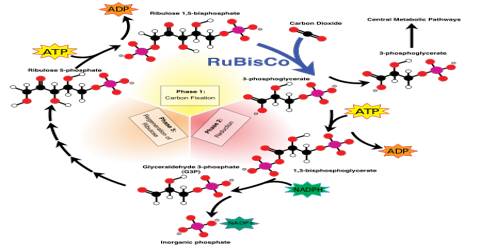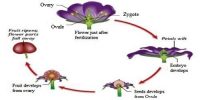Calvin and Bassham path way:
Photosynthetic carbon metabolism jointly with other energy and oxidative reactions and secondary biosynthetic processes are vital for the formation of organic matter; and, thereby, the Benson-Bassham-Calvin cycle ensures maintenance of the biosphere.

- Atmospheric CO2 enters the mesophyll cells through stomata and produces unstable Keto-acid by uniting with ribulose 1,5 di-phosphate. Keto acid instantly breaks down and forms two molecules of phosphoglyceric acid.
- Two molecules of phosphoglyceric acid receive energy from ATP and 2H+ from NADPH + H+ and form phospho-glycerol dehyde.
- Now, one molecule of 3-phospho- glycerol dehyde reacts with di-hydroxy acetone phosphate to form one molecule of fructose-1,6 di-phosphate.
- Fructose-1.6 di-phosphate is then turned into fructose-6 phosphate and eventually fructose-6 phosphate as converted to glucose.
- The first permanent compound in this cycle is three carbon phosphoglyceric acid. Thus the plants that form three carbon phosphoglyceric acid are called C3














